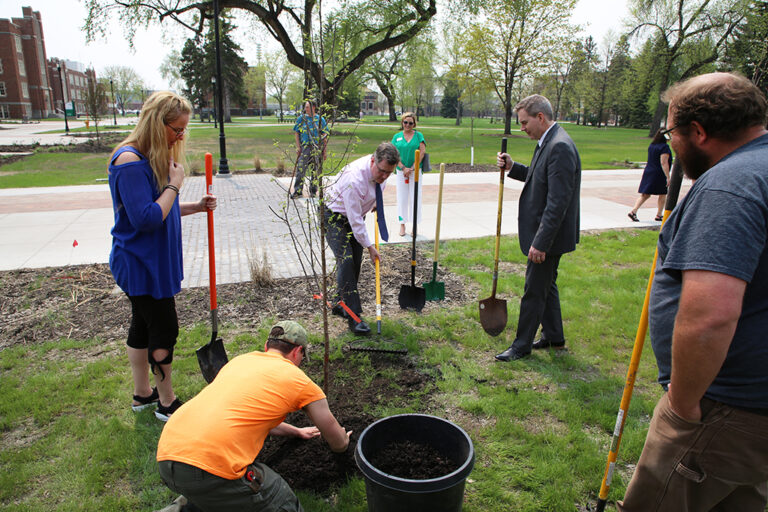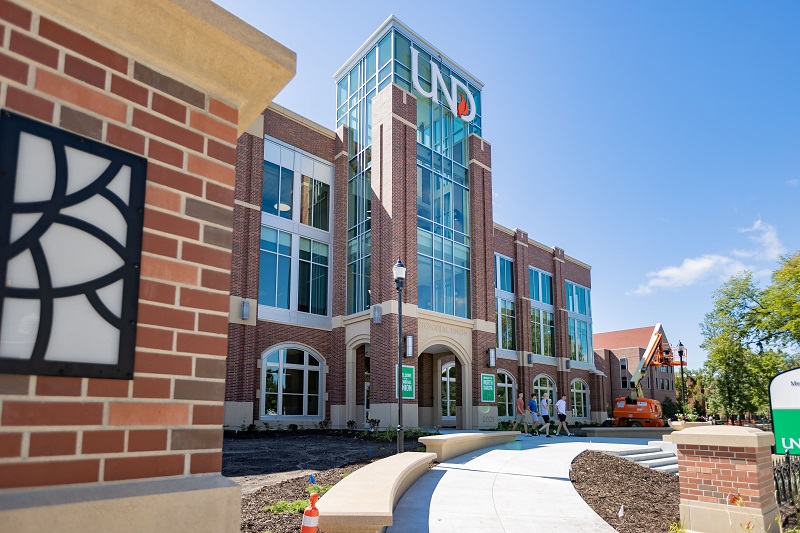Aerospace engineer to test planetary exploration suit in Antarctica
Aerospace engineer and researcher Pablo de Leon is part of a unique mission to test a UND planetary exploration suit — the NDX-1 — at a remote military base in Antarctica. The team departed for the Antarctic base from an Argentine Air Force site earlier this week.
The Spaceward Bound Mission includes de Leon, of the UND Department of Space Studies; space biologist Jon Rask, a Bismarck, N.D., native and UND Space Studies master’s degree alum; and Dr. Margarita Marinova. Rask is Senior Scientist and Marinova is a planetary scientist at the National Aeronautics and Space Administration’s (NASA’s) Ames Research near San Francisco, CA. The team also includes a field support and documentation specialist.
The team is expected to spend seven to 10 days at the Marambio Station, Argentina’s main Antarctic base, to conduct a variety of tests with the NDX-1 planetary exploration suit system. The NDX-1 also has been tested extensively in the Badlands and at the Dahlen Esker in North Dakota, at the Mars Desert Research Center in Utah, and at the Ames Research Center.
The NDX-1 was designed and constructed at UND through NASA funding provided by the North Dakota Space Grant Consortium.
The team plans to blog this expedition; you can follow the team’s test routines at http://spacesuitlab.blogspot.com/
Background
Since 2008, NASA Ames Research Center and the University of North Dakota have worked together to incorporate the pressurized NDX-1 space suit into subsurface drilling and sample gathering tests at astrobiologically interesting field sites in North Dakota, USA. The team has successfully demonstrated that a subject who has donned the pressurized NDX-1 suit can accomplish drilling operations and soil/rock sample gathering procedures.
Goals
Antarctica is arguably the most Mars-like location on Earth, and is therefore an excellent location to test scientific hypotheses and technologies that support Mars exploration. The four main goals of this mission are to test the use of pressurized space suit technology in Antarctica; test rock-drilling technologies; test radiation/dosimetry technologies; gather soil samples from the permafrost for microbial analysis; and document the entire expedition.
The expedition to Antarctica is modeled on the experience learned in North Dakota to accomplish several objectives, including a demonstration in the use of a pressurized space suit and drilling operations at desired locations with rock drilling technologies.
Samples of soil and ice will be gathered at the top of the permafrost boundary, at the ice-soil interface, as well as within the permafrost. The data gathered from this analysis will be compared to data from UND space suit experiments conducted earlier, including a test and demonstration conducted earlier in western North Dakota that garnered international attention.
–30–
Useful links:
*UND Space Suit Laboratory http://www.human.space.edu/current.html
*UND Space Suit blog http://spacesuitlab.blogspot.com/
*NASA Web page about UND space suit program
http://nasawatch.com/archives/2006/05/und-tests-experimental-planetary-space-suit.html
*UND Department of Space Studies http://www.space.edu/


